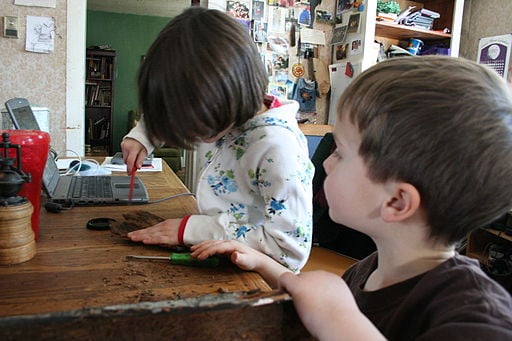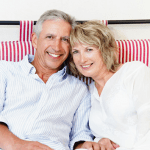 I read that nearly one in five people in the US has a diagnosable anxiety disorder. Can that be true? How are we ever going to pass a budget or design great schools or keep families intact if every one is stressed out all of the time?
I read that nearly one in five people in the US has a diagnosable anxiety disorder. Can that be true? How are we ever going to pass a budget or design great schools or keep families intact if every one is stressed out all of the time?
If Dr. John Ratey is right, the answer is that we’ll all need to engage in a whole lot more exercise. I started to review his book, Spark, back in the fall. I’m finishing the review this week and next by talking about the effects of exercise on various disorders and issues. Today, we’ll take a look at anxiety.
All types of anxiety disorders share in common that the person’s nervous system reacts as though there is a threat — by becoming hyperalert, tense, and expecting the worst — in situations that aren’t all that threatening. Living in a chronically anxious state sucks for anyone, but may be particularly risky for children. Left untreated, the anxiety wears “negative patterns in their brains that can become entrenched and set those kids up for future problems.”
All of this is old news. So is the news that exercise reduces the state of anxiety. The state of anxiety are the symptoms, while the trait of anxiety is a predisposition to the state. What’s new, and what Dr. Ratey lays out beautifully in his book, is that as a person’s fitness improves, he or she can actually reduce the trait of anxiety.
Here’s how (stolen in a nearly verbatim but abridged form from pages 106-108):
1. It provides distraction. Studies show that anxious people respond well to any directed distraction — meditating, eating lunch with a group, reading a magazine. But the antianxiety effects of exercise last longer.
2. It reduces muscle tension. One study showed that people with anxiety have overactive electrical patterns in their muscle spindles and that exercise reduced muscle tension. This acted like a beta-blocker, interrupting the negative feedback loop from the body to the brain that heightens anxiety.
3. It builds brain resources. Exercise increases serotonin and norepinephrine both in the moment and over the long term. Serotonin works at nearly every junction of the anxiety circuitry, and norepinephrine is the arousal transmitter. Modulating its activity is critical to breaking the anxiety cycle. Exercise also increases the inhibitory neurotransmitter GABA. (GABA is the primary target for most antianxiety drugs.) Finally, exercise increases BDNF and ANP, also critical in breaking the anxiety cycle.
4. It teaches a different outcome. Because anxiety brings the sympathetic nervous system into play, when you sense your heart rate and breathing picking up, that awareness can trigger anxiety or a panic attack. But those same symptoms are inherent to exercise — and that’s a good thing. If you begin to associate the physical symptoms of anxiety with something positive, the fear memory fades in contrast to the fresh one taking shape.
5. It reroutes your circuits. By activating the sympathetic nervous system through exercise, you break free from the trap of passively waiting and worrying, and thus prevent the amygdala from running wild and reinforcing the danger-filled view of life. Instead, when you respond with action, you send information down a different pathway of the amygdala, paving a safe detour and wearing in a good groove.
6. It improves resilience. You learn that you can be effective in controlling anxiety. The psychological term is self-mastery and it is a powerful prophylactic against anxiety.
7. It sets you free. Researchers immobilize rats in order to study stress. People who are anxious tend to immobilize themselves – finding a safe spot to hide from the world. The opposite of that, and the treatment, is taking action, going out, and exploring, moving through the environment. Exercise!
I’m so glad we started our vigorous exercise reform in the fall. But I don’t follow through on the schedule when we get “too busy to exercise.” If you see me on the street, ask if I helped the boys exercise that day. If I say ‘no,’ berate me publicly and threaten to call social services. Our family NEEDS exercise.
What about you? Are you feeling inspired? Or do you have better wiring than we do? It’s okay if you do. We’ll still love you. Especially after we run for awhile.















